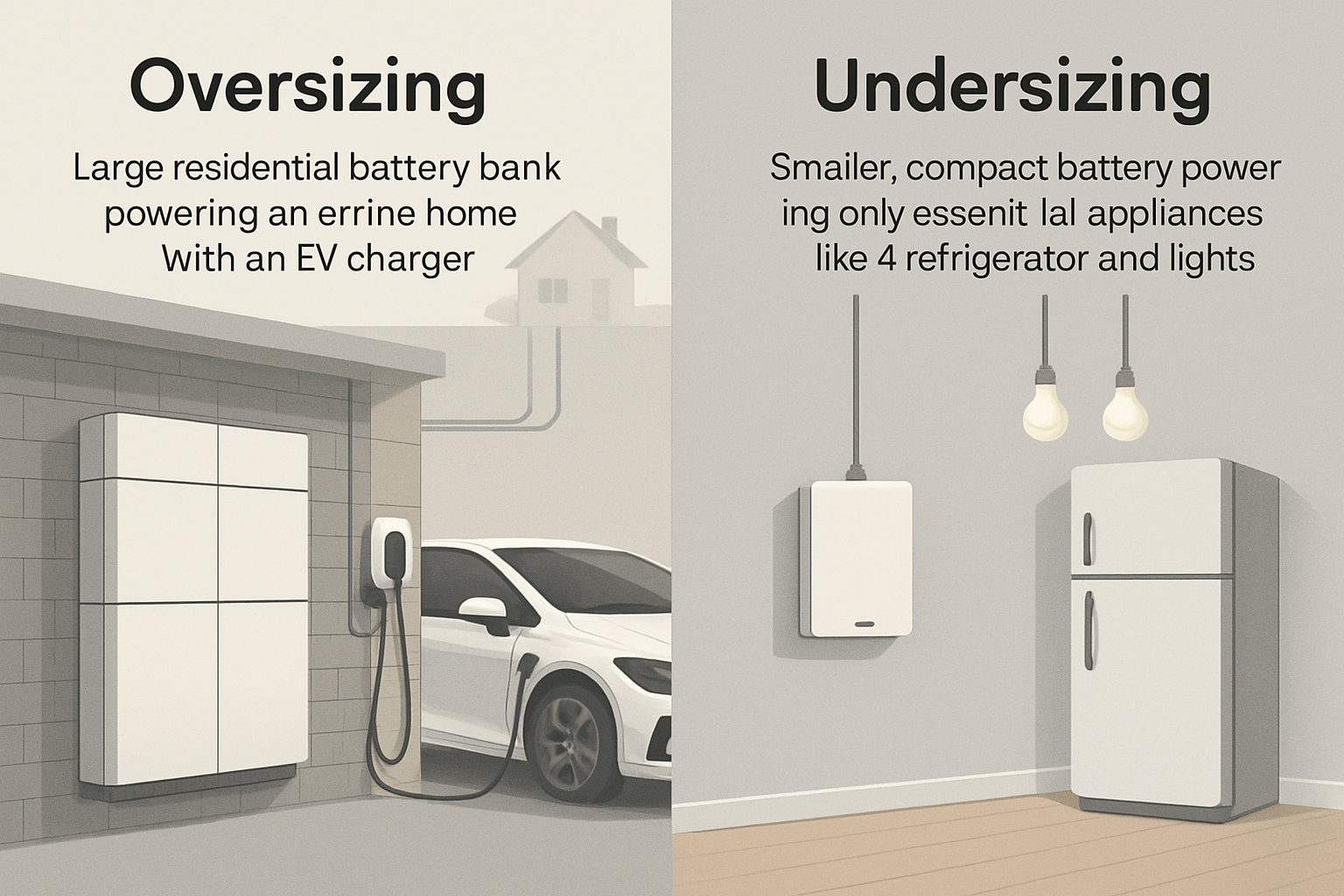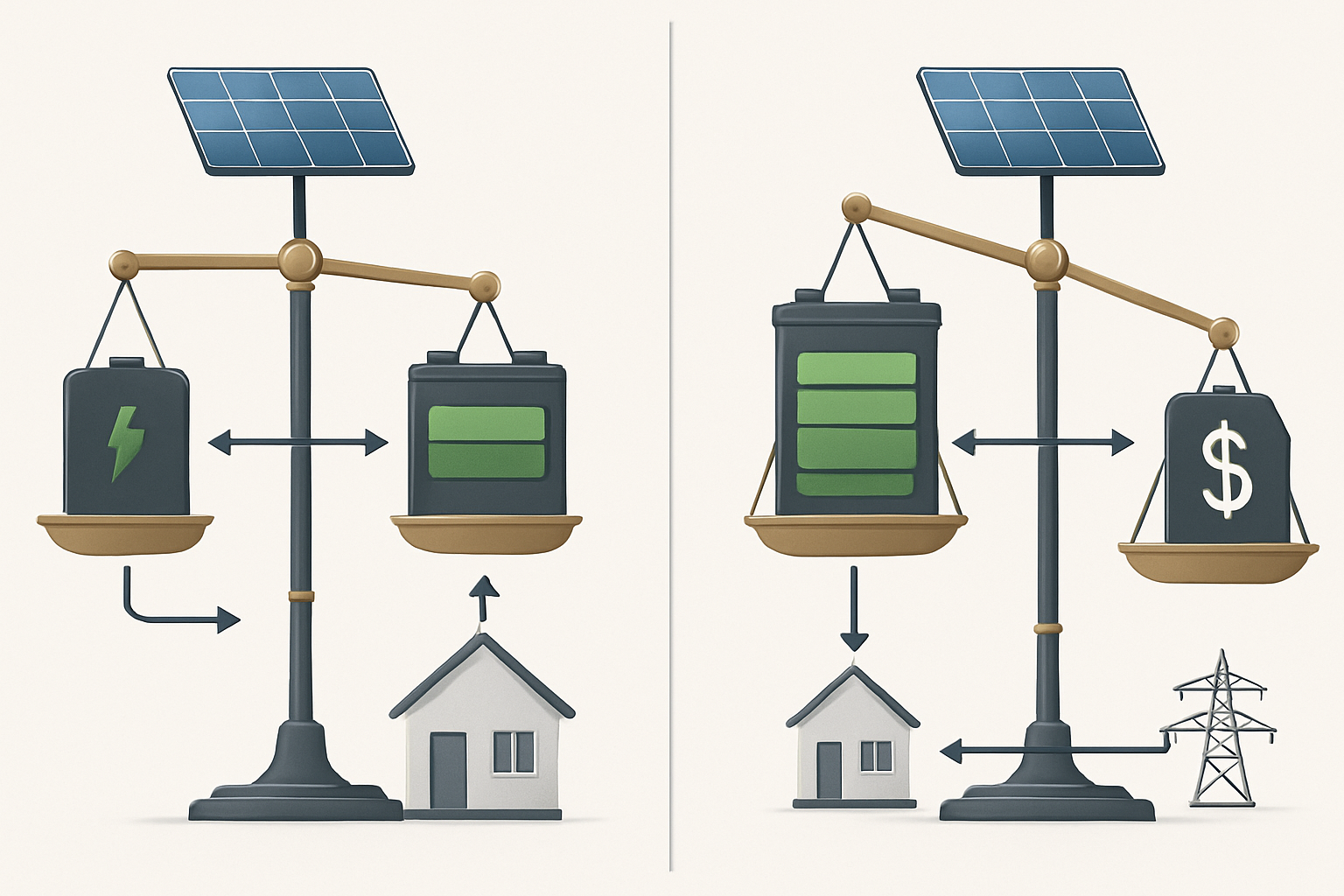Investing in a solar energy system is a significant step toward energy independence and lower utility bills. But the true power of solar is unlocked when you can store the energy you generate. A solar battery lets you use solar power at night or during outages. However, the financial return on your investment hinges on one critical factor: correctly sizing your battery storage. An improperly sized system can lead to wasted capacity or insufficient power, both of which undermine your savings.
Understanding the Fundamentals of Battery Sizing
Properly sizing a solar battery involves more than just picking the largest capacity you can afford. It requires a balanced understanding of key performance metrics and the financial implications of getting it wrong. This balance is central to achieving the best possible return on investment.
Key Metrics Beyond Kilowatt-Hours
To make an informed decision, you need to look at a few core specifications. Capacity, measured in kilowatt-hours (kWh), tells you how much total energy the battery can store. Think of it as the size of your energy reservoir. The power rating, measured in kilowatts (kW), indicates how much electricity the battery can deliver at once. This is like the width of the pipe from your reservoir; a higher kW rating can power more appliances simultaneously. Furthermore, as detailed in this ultimate reference on solar storage performance, metrics like Depth of Discharge (DoD) and round-trip efficiency are crucial. DoD defines the percentage of the battery's capacity you can safely use, while round-trip efficiency measures how much energy is lost in the storage and retrieval process. A higher rating in both means you get more usable energy from your system.
The Financial Consequences of Mis-Sizing
Choosing the wrong size has direct financial consequences. An undersized battery will not meet your energy needs, forcing you to draw expensive electricity from the grid, especially during peak hours. This defeats one of the primary purposes of having a storage system. Conversely, an oversized battery means you have paid for storage capacity that you rarely, if ever, use. This extends the system's payback period and reduces your overall ROI. The goal is to find the sweet spot that aligns with your consumption patterns and energy objectives.
A Practical Approach to Sizing Your Solar Battery
A systematic process will help you determine the ideal battery size for your home. This involves analyzing your energy use, clarifying your goals, and using tools to calculate your specific needs. This methodical approach removes guesswork from the equation.
Step 1: Analyze Your Energy Consumption
The first step is to understand how much electricity you use. Your utility bills are a great starting point, showing your average daily and monthly consumption in kWh. Pay close attention to seasonal variations. For example, your energy use might spike in the summer due to air conditioning. For a more granular view, a home energy monitor can track your real-time consumption, revealing peak usage times and the power draw of individual appliances. This data provides a solid foundation for your sizing calculations.
Step 2: Define Your Energy Goals
What do you want your battery system to achieve? Your goals will directly influence the required size. Common objectives include maximizing self-consumption, where you store excess solar energy from the day to use at night. Another popular goal is securing backup power for essential appliances during a grid outage. This requires you to identify critical loads like refrigerators, lights, and medical equipment. A third strategy is time-of-use arbitrage, which involves charging your battery when grid electricity is cheapest and discharging it during expensive peak hours to maximize savings.
Step 3: Utilize a Battery Sizing Calculator
Once you have your data and goals, a residential solar battery sizing calculator can provide a reliable estimate. These tools typically use a straightforward formula: Battery Size (kWh) = (Average Daily kWh Usage × Days of Autonomy) / (DoD × System Efficiency). 'Days of autonomy' refers to the number of days you want to run on battery power alone. While a battery sizing calculator is an excellent starting point, remember that it provides an estimate. The final configuration should be discussed with a qualified installer who can account for all variables.
Technical Factors for Optimizing ROI
Beyond basic calculations, several technical aspects play a role in the efficiency and financial viability of your solar energy storage system. Considering these factors ensures your components work together harmoniously for peak performance.
Matching Your Battery to Your Solar Array
Your solar array and battery must be properly matched. A large battery paired with a small PV array may struggle to reach a full charge, especially on shorter winter days. Conversely, a small battery with a large array may fill up quickly, leading to excess solar generation being sent back to the grid for minimal compensation. According to a report from the IEA, Next Generation Wind and Solar Power, optimizing the entire system's design is key to maximizing the value of the generated electricity.
LiFePO4 vs. Other Chemistries
The type of battery chemistry you choose significantly impacts performance and longevity. Lithium Iron Phosphate (LiFePO4) batteries have become a leading choice for residential energy storage due to their superior safety, long cycle life, and high DoD. They consistently outperform older technologies, delivering better value over the life of the system.
| Metric | LiFePO4 Battery | Traditional Lithium-ion |
|---|---|---|
| Cycle Life | 4,000 - 10,000 cycles | 500 - 1,500 cycles |
| Depth of Discharge (DoD) | 80% - 100% | 70% - 80% |
| Safety | Very high thermal stability | Risk of thermal runaway |
| Operating Temperature | Wider range | More limited range |
| Lifetime Value | Excellent | Moderate |
System Integration and Efficiency
How the battery integrates with your solar setup affects overall efficiency. DC-coupled systems, where the battery charges directly from the solar panels, are generally more efficient than AC-coupled systems. As noted in an article by the U.S. Department of Energy, using DC-DC converters in solar-plus-storage applications can increase efficiency because it requires only one inverter for both the solar array and the battery. This approach simplifies the system and reduces energy conversion losses.
Ensuring Long-Term Value
A solar storage system is a long-term investment. Planning for the future and taking advantage of available financial incentives can enhance its value and shorten the payback period.
Scalability for Future Needs
Your energy needs may change over time. You might purchase an electric vehicle or add an extension to your home. Choosing a modular battery system allows you to add more storage capacity in the future. This scalability ensures your system can adapt to your evolving lifestyle without requiring a complete overhaul.
Leveraging Incentives and Policies
Government incentives can significantly reduce the upfront cost of a solar energy storage system. The IEA's World Energy Investment 2023 report highlights how policies like the U.S. Inflation Reduction Act offer substantial tax credits for battery storage, making the investment more attractive. Be sure to research federal, state, and local incentives that may apply to you.
Disclaimer: This information is for educational purposes only and does not constitute financial or legal advice. Consult with a qualified professional for guidance specific to your situation.
Achieving True Energy Independence
Right-sizing your solar storage is not just a technical exercise; it is the key to unlocking the full economic potential of your solar power system. By carefully analyzing your energy consumption, defining clear goals, and selecting compatible, high-performance components, you can create a system that delivers both energy security and a strong financial return. An optimized system empowers you to take control of your energy future, reducing your reliance on the grid and hedging against rising electricity costs.
Frequently Asked Questions
How many batteries do I need for a 5kW solar system?
The ideal battery capacity for a 5kW solar system depends on your goals. For daily self-consumption of solar energy, a 10-15 kWh battery is a common and effective size. If your primary goal is multi-day backup power during outages, you will need a larger capacity calculated based on the consumption of your essential loads.
Can I add more batteries to my solar storage system later?
Yes, if you select a modular and scalable system from the start. Many modern LiFePO4 battery systems are specifically designed for easy expansion. This allows you to increase your storage capacity as your energy needs grow or your budget allows, providing a future-proof solution.
What is the average payback period for a solar battery?
The payback period for a solar battery can vary significantly based on factors like local electricity rates, the total cost of the system, and the value of available incentives. In regions with high electricity costs or time-of-use rate plans, a properly sized battery can often pay for itself in 5 to 10 years through utility bill savings.





Leave a comment
All comments are moderated before being published.
This site is protected by hCaptcha and the hCaptcha Privacy Policy and Terms of Service apply.